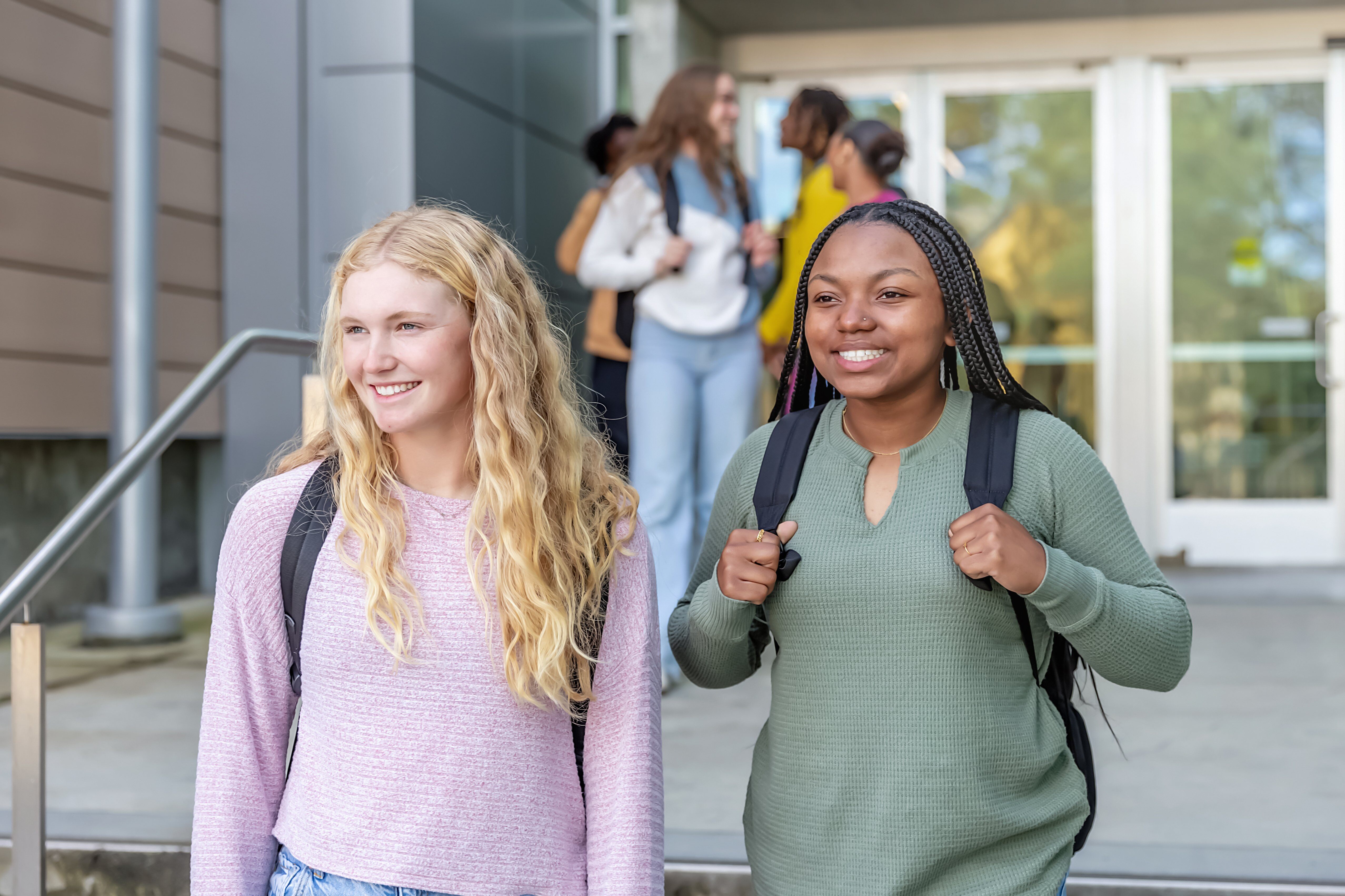Blog
It takes All of Us: Shifting from Chronic Absenteeism to Meaningful Engagement
Among the most troubling effects of the Covid-19 pandemic has been too many students not going to school in too many communities. “Chronic absenteeism” was barely recognized as a “thing” when the term was first coined in 2008 by Hedy Nai-Lin Chang. Now it’s the buzzword to rally the nation around schools.
This focus is for good reasons: Chang and many other researchers found that tracking average student attendance hides important differences (as averages usually do). Students who miss 10 percent (about a month) of school or more during a school year are the most likely to struggle. Then, during and after the Pandemic, the levels of chronic absenteeism skyrocketed and have stayed significantly higher than before that global crisis.
It may be tempting to assume, as we have so many times, that something is wrong with the youth and families. However, research by Chang and many others is clear that such an approach is misguided. Chronic absenteeism is a symptom of a much more systemic set of issues facing young people, families, neighborhoods, schools, and communities of many shapes and sizes.
The good news is that many of the resources and solutions needed to reduce chronic absenteeism are in those same people and places. We need to see, partner, and invest in each of them—and in the challenge—differently.
Refocus on Strength-Based Solutions
This reframed agenda begins with rethinking how we approach chronic absenteeism (which is also referred to as “truancy”). Now and historically, the assumption has been that it’s an individual, punishable problem that drags down everyone else. Consider these examples:
- A budget problem? A central concern about chronic absenteeism in some (at least as it’s communicated to the public) has been its effect on the district’s budget (exacerbated by declining student populations overall). What does this focus signal to families and students about the challenges they’re facing that make it hard to go to school?
- A crime? How might students and families interpret the messages about the positive experiences and benefits of schools while also maintaining (and, in some cases, strengthening) policies that keep not going to school (a.k.a., absenteeism or the related but different issue of truancy) a crime in several states. Indeed, in 2018, more than 60,000 youth were referred to juvenile court for truancy by schools. We can assume that the numbers have increased since the Pandemic.
In addition to these obviously problematic framings of youth and families from a deficit perspective, equally challenging and transformative shifts are needed. They involve shifting from a focus on the problem (chronic absenteeism) to focusing on systemic and culture-changing solutions, starting with two:
- Connect with each and every student, teacher, family, administrator, and staff person so they see themselves as valued, integral contributors to the school learning community; and
- Unleash the capacities of many diverse stakeholders and potential resources throughout the community, and then welcome them to be part of building a better place for young people to learn, grow, and thrive.
No single person, sector, organization, or system is or can be fully responsible for these two solutions. At the same time, an inspired stakeholder, sector, organization, or system is ready and well-positioned to champion one of these strategies, drawing others into this collective, movement-driven goal.
These shifts are aligned with FrameWorks Institute’s consistent recommendation to shift from presenting issues as crises or problems within individuals to examining how systems, institutions, cultures, and the environment shape the challenges that young people face. Those become opportunities to recognize and accept shared responsibility and to find shared solutions.
Cultivate a Relationship-Rich Culture for Every Person in the School Community
Creating relationship-rich school cultures would be the first of those shared solutions. The culture of a school or organization can be informally defined as “the way we do things around here.” When it comes to relationships, belonging, and trust involves all the messages, symbols, rituals, and expectations that are or become norms or part of the school’s culture.
A relationship-rich culture for all doesn’t mean a homogeneous relational culture. The challenge is for that culture to be truly welcoming and trustworthy for the diversity of students, educators, and staff who are part of the school community. If they don’t feel safe, welcomed, or included because of their race or ethnicity, their sexual orientation or gender identity, the way they dress, their religion (or lack of it), their home language, their abilities, or other unique characteristics, they may find it very difficult to face going to school many mornings.
Make School a “Good Fit” for Each Person in the School Community
What if every school had an aspirational goal that each student, teacher, family, administrator, and staff member felt safe, welcomed, and valued—like they belonged—when they were in the school building, in a school virtual space, or interacting with someone from the school community? That would require really knowing each person, what makes them tick, adjusting for what they need to learn, being curious about what makes them unique and what energizes them.
You wouldn’t have to start with everyone, but just those who weren’t showing up regularly, which you could identify through record keeping and data analysis. Or you could also use an activity like this all-teacher activity from a Nevada school (which schools that focus on nurturing Developmental Relationships and Developmental Assets have found to be powerful) as a way for students and teachers to get to know each other. The point is to find specific ways to get to know each individual. They will increasingly recognize that they each play valuable roles within the school community. When families and students know they’re valued and welcomed, and when staff know they are important, all are more likely to show up and contribute to shape a school where each person wants to be.
As relationships deepen between school leaders and students and families, leaders become more understanding of the other specific challenges that impact chronic absenteeism. These may include, based on a synthesis of the research, mental and physical health issues, food insecurity, housing instability, transportation, family caregiving responsibilities, involvement in the justice or child welfare system, and, most often, the compounding effects of several of these and other realities. These kinds of issues cannot be solved by schools alone. But seeing and knowing them changes the call to action as leaders engage with the broader community in the next opportunity.
Link with all Kinds of Allies, Everywhere
Many states and schools are experimenting with different ways to ameliorate or address the effects of some of these systemic challenges. In the end, however, addressing many of the underlying barriers requires much more than a teacher, principal, whole school, or even school policy can do on its own. That’s where recognizing the shared opportunity and responsibility to support growth and learning is shared across communities, states, and the nation—the ecosystems in which young people live, grow, and draw sustenance.
- People with influence: Some allies in the ecosystem may be people with power to influence systems that can impact mental or physical health care, transportation systems, child welfare, juvenile justice, or neighborhood cohesion. How might they be part of the solution? Have they talked with families and students? If not, how might you arrange those conversations? What adaptations might be possible with a bit of creativity that could make it easier for students to get to school regularly?
- People and places with capacity: Some allies may not have a lot of influence, but they may have time and interest to invest. Perhaps they could help individual families with transportation, childcare, or homework support, waiting at the bus stop, or whatever a family would value to increase regular school attendance. In this case, the goal wouldn’t be to get more people in the school, but to get more people supporting students and families who would value that support.
Join your Voice with the Message Makers
Sometimes it’s easier to build momentum to take on a big challenge when others are also working on it. That’s the opportunity we all have this month, which is Attendance Awareness Month. Attendance Works, in collaboration with the Ad Council, has launched an ambitious call to action, 50 in 5, which aims to cut chronic absenteeism in half in five years. You can find dozens of resources to support your own call to action on the campaign’s website. They emphasize strategies for leaders and organizations across communities that are consistent with the strategies proposed in this article.
A complementary, student-focused campaign is the U. S. Department of Education’s Attendance Champions Challenge to highlight new ways to understand barriers to school attendance and propose creative solutions to increase student attendance and engagement in school (open until November 29). It’s designed for classrooms, youth groups, and by individual young people.
Look Where you’re Going!
A basic rule of driving is to look ahead to where you’re going. Yes, you need to look around to check your blind spots, monitor your rearview mirror, and know what is going on around you. But you mostly need to keep your eyes focused on where you’re going. That’s because you tend to steer the car toward where you’re looking.
The same idea is useful for thinking about chronic absenteeism and consistent attendance. Though we certainly need to understand the challenge of chronic absenteeism, we need to set our sights on where we’re going. The vision is schools where each student, family, educator, and others know they are valued, contributing members of the school community. Schools actively nurture a culture that is rich in intentional, inclusive, and equitable relationships so that all feel safe, loved, and valued. And schools are centered in communities that keep their eyes on a shared commitment to ensure that all young people—particularly those who have experienced some of the greatest challenges in life—have access to the resources they need to fully engage in learning and thrive in life.




